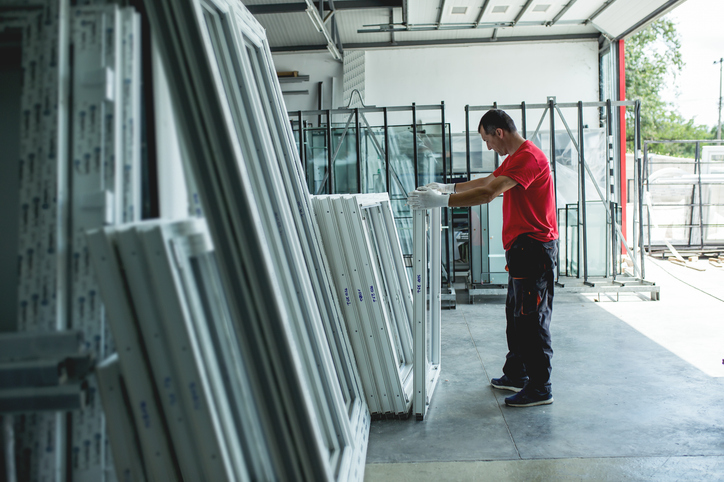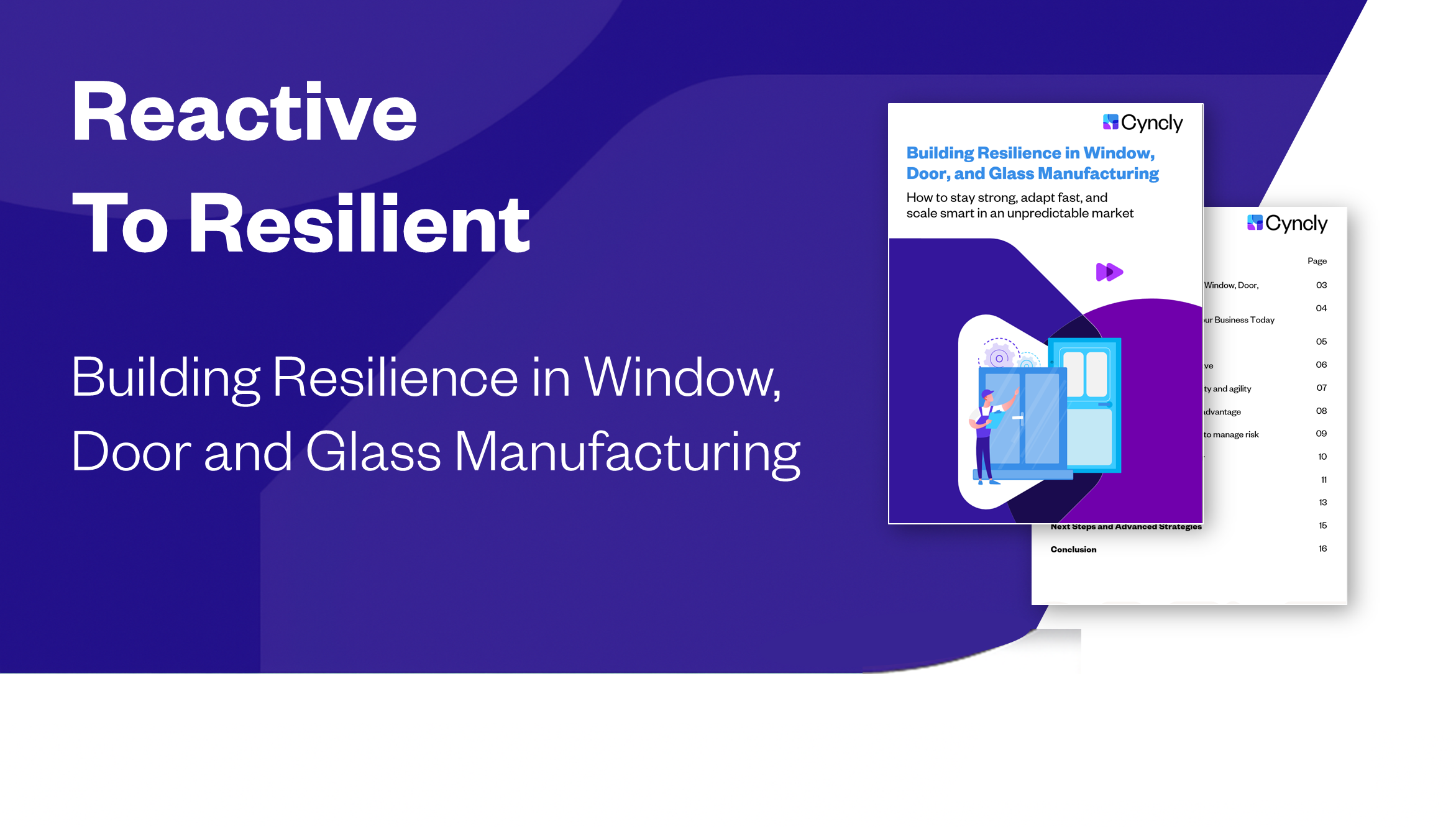- All blogs >
- Windows Doors and Glass >
- Navigating Tariffs: Building...
Navigating Tariffs: Building Resilience for Window, Door, and Glass Manufacturers
Windows, Doors & Glass

Matt Batcha

For US-based Window, Door, and Glass (WDG) manufacturers, tariffs are more than just a line item on an import document; they represent a significant source of uncertainty and cost volatility. In an industry already grappling with supply chain disruptions and rising material prices, navigating tariff fluctuations is critical for maintaining profitability and operational stability. So, how can North American WDG manufacturers build resilience against these unpredictable economic headwinds?
The Tariff Challenge: A Core Pain Point
Tariffs directly impact the cost of key materials like glass, aluminum, and hardware, which are often sourced internationally. This leads to a pressing question for manufacturers: "With material prices up and tariffs in flux, how do we protect our margins and pass costs fairly?" The answer lies in proactive, strategic resilience building within your supply chain and overall operations.
Strategies for Tariff Resilience:
- Diversify and Localize Your Supply Chain
One of the most effective ways to mitigate tariff risk is to reduce reliance on single-source international suppliers. For North American manufacturers, this means actively seeking out and qualifying alternative sources, particularly domestic or regional ones. The trend of "re-shoring" production and sourcing closer to home is gaining momentum precisely because it buffers against global risks and tariffs. By diversifying your supplier base for critical components - such as stock glass, custom IGUs, uPVC and aluminum extrusions, and hardware kits - you create redundancy and reduce vulnerability to tariffs imposed on specific countries or materials. - Build Strategic Safety Stocks (with Caution)
While excess inventory can tie up capital, a strategic approach to safety stock can provide a crucial buffer against sudden tariff impacts. Identify components most susceptible to tariff changes and potential supply disruptions. For these critical items, maintaining a reasonable buffer inventory allows you to continue production without immediately absorbing new, higher costs. Modern inventory optimization tools which evaluate variables as rolling average of usage, backlog, material already on order, and vendor lead times can help balance stock levels, ensuring you’re prepared without being over-stocked. - Implement Proactive Contingency Planning
Anticipation is key. For high-impact risk scenarios, such as a sudden tariff on a specific component vital to your production, develop clear contingency plans. This might involve pre-qualifying alternative materials or even exploring temporary subcontracting options. Regularly conducting "fire drills" or scenario planning exercises helps your team understand the playbook in advance, enabling a swifter, more coordinated response when tariffs hit. Systems that support multiple vendors for the same BoM part will be critical to streamline this planning. - Leverage Technology for Visibility and Agility
An integrated platform, such as an ERP system with robust supply chain modules, can provide real-time visibility into your material costs and supplier status. This allows you to track commodity price trends and simulate how a 10% increase (due to tariffs or other factors) would affect your product margins. Such insights are invaluable for informing pricing adjustments or hedging strategies. Real-time data empowers faster decision-making, helping you adapt your procurement strategy ahead of the curve. - Optimize Product Offerings and Pricing
When tariffs drive up costs, the ability to flexibly configure products and adjust pricing becomes paramount. A robust Configure-Price-Quote (CPQ) system allows you to manage product options and instantly generate accurate pricing, even with fluctuating material costs. Applying a surcharge for tariffs, as you would for fuel surcharges, allows for passing on the variable price fluctuations without issuing new price books or loss of margin. This ensures that your sales team can provide competitive quotes that reflect current realities, protecting your margins while remaining attractive to customer.
Cyncly: Empowering Your Resilience Journey
At Cyncly, we understand the unique challenges faced by North American WDG manufacturers. Our end-to-end software solutions are designed to simplify complexity, digitize execution, and deliver a truly connected customer experience. By integrating your sales, engineering, and production processes, and providing tools for data-driven decision-making, we help you build the operational resilience needed to thrive amidst tariff uncertainties and other market disruptions.
Our solutions built on 30+ years of industry partnerships are developed to handle these situations and continue to adapt as the world evolves. We invest in innovation, leveraging AI, cloud, and mobile-first experiences to keep you ahead of the curve, no matter what economic shifts occur.
Conclusion: Turn Challenges into Opportunities
Tariffs are a persistent reality for North American WDG manufacturers, but they don't have to be a debilitating one. By proactively strengthening your supply chain, embracing strategic planning, and leveraging integrated technology, you can transform these challenges into opportunities for greater efficiency and adaptability. Building resilience is an ongoing commitment, but with the right strategies and partners, your business can not only weather the storm but emerge stronger.
To explore how Cyncly can help your manufacturing operation navigate tariff challenges and build lasting resilience, download our free playbook Building Resilience in Window, Door, and Glass Manufacturing.
